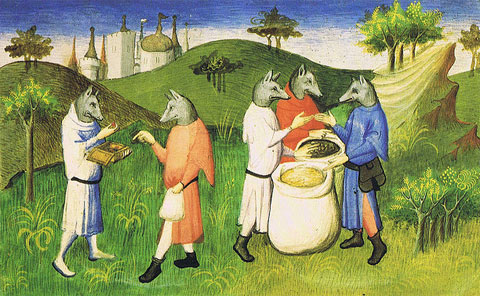The medieval bestiary, a collection of creatures that often appear not only on the margins of manuscripts but in columns, balustrades, mosaics and the facades of cathedrals and basilicas all around Europe (and also in America), is diverse and complex.
Although the origin of some of these creatures is definitely biblical, they can also be found in many other Greek texts (such as those of Pliny the Elder), or in the well known classic epic poems of Homer and the like. However, it is also true that several medieval writers, among them Jan de Langhe (who is considered to be the author of the Travels of Sir John Mandeville), added more than one detail to these traditional stories, deeply transforming them and making them a synthesis of Christian symbolism (sometimes featuring deep theological content) and classical or pagan mythology.
Of all these imaginary beasts, some are more popular — and therefore, better known — than others. Out of a list of ten popular medieval monsters published by Medievalists.net, we have selected the three that we believe are those with whom we most commonly deal either in works of art, cathedrals or even in movies.
Dragons

There are not that many monsters in the Bible. But the few that we find in it are really important. Christian tradition has understood that the dragon is the ultimate and final form of the serpent of Genesis, so it is naturally associated with the devil. In the book of the Apocalypse we read that, with its tail, the dragon “swept a third of the stars out of the sky and flung them to the earth.”
This image influenced the medieval bestiary, which ended assuming the dragon’s tail was then its most powerful weapon, which was used to squeeze and suffocate its prey, just like boa constrictors do. Interestingly, some sources indicate that the mortal enemies of dragons are elephants – God knows why — but it is certainly more common to find images of St. George slaying the beast, piercing it with a spear.
Unicorns

Unicorns deserve special treatment (see this old post) as they became an iconographic synthesis of several Christological principles.
Let us note that among the first to speak of the existence of the unicorn were various Greek historians and naturalists, although in some translations of the Bible unicorns do appear in some stories of the Old Testament, and even in the Psalter.
It was the one and only Isidore of Seville who wrote about the unicorn in the 7th century, describing it as “a four-legged beast that has a single horn on its forehead; it is very strong and pierces anything that attacks it. It can kill combat elephants wounding them in the belly. The unicorn is too strong to be captured by hunters, but there is a trick: if a virgin girl is placed in front of a unicorn and she bares her breast to it, all of its fierceness will cease and it will lay its head on her bosom, and thus quieted is easily caught.”
Cynocephali

Literally “dog heads,” cynocephali were associated with a certain idea of evil, which thinks of the devil as being composed of both anthropomorphic and animal combinations. The image suggests that, because of sin, these men (that is, the cynocephali) partially lost their human condition, thus turning into half-animals. Some historians say that this kind of image was actually inherited from ancient Persian and Egyptian religions; actually, some historians claim this is the origin of the many-headed beasts of both the Book of Revelation and the Byzantine dragon.
Some apocryphal stories relate that St. Peter met the Cynocephali and preached the Gospel to them, while some other Eastern Orthodox and African Christian traditions even claim St. Christopher was a Cynocephalus himself.

